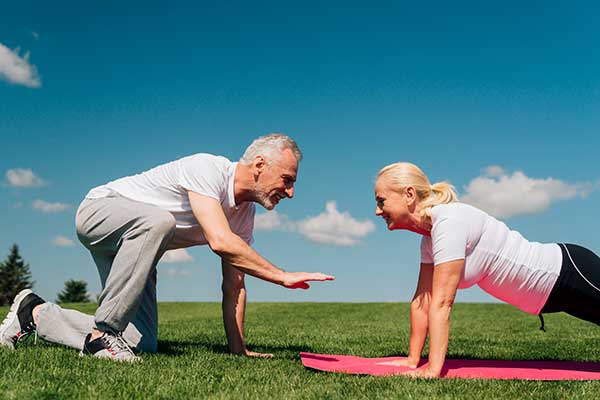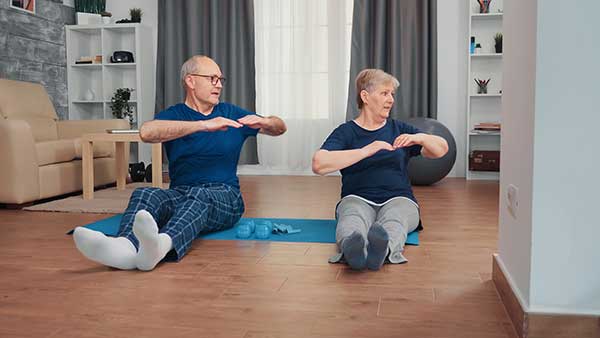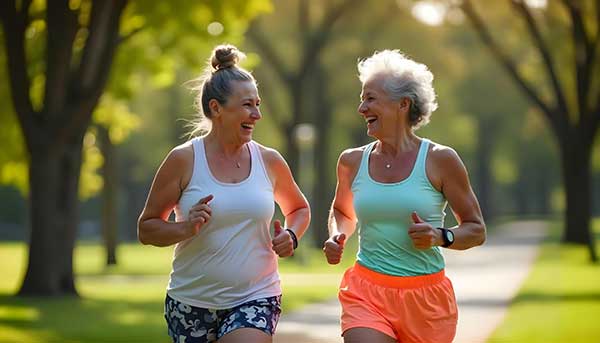Cardiovascular Exercises for The Elderly
As we age, maintaining a healthy lifestyle becomes more essential than ever. One of the most effective ways to achieve this is through cardiovascular exercises for the elderly. These activities not only boost heart health but also enhance overall well-being. The good news? You don’t need to run marathons or spend hours at the gym to reap these benefits. There are plenty of low-impact options that can fit seamlessly into your daily routine.
Whether you’re looking to improve your stamina, manage weight, or simply enjoy life more fully, incorporating cardio workouts can be a game changer. Let’s explore why these exercises are vital for seniors and discover some enjoyable activities you can start today!
Why Cardiovascular Exercises are Important for the Elderly
Cardiovascular exercises play a crucial role in the health of older adults. They help improve heart efficiency, ensuring that this vital organ pumps blood effectively throughout the body.
Engaging in regular cardio can significantly lower the risk of chronic conditions like hypertension and diabetes. These exercises also enhance circulation, helping to maintain healthy blood pressure levels.
Moreover, cardiovascular workouts promote mental well-being by releasing endorphins. This natural mood booster can reduce feelings of anxiety and depression, fostering a sense of happiness and stability.
Another key benefit is increased endurance. With improved stamina, daily activities become easier and more enjoyable, allowing seniors to stay active longer without feeling fatigued.
Staying socially active through group classes or walking clubs adds an element of fun while promoting connections with others.
Types of Low-Impact Cardio Exercises for Seniors
Low-impact cardio exercises offer an excellent way for seniors to stay active without putting undue stress on their joints. Walking is a classic choice, whether on a treadmill or around the neighborhood. It’s easy to adjust the pace and distance according to fitness levels.
Swimming is another fantastic option. The buoyancy of water supports the body while providing resistance, making it gentle yet effective for cardiovascular health.
Cycling, either on a stationary bike or outdoors, can also be enjoyable and low-impact. It allows seniors to build stamina while keeping pressure off their knees.
Chair aerobics provide a fun alternative as well, combining seated movements with music for an engaging workout experience at home or in community classes.
Each of these activities promotes heart health while ensuring comfort and safety for older adults looking to incorporate more movement into their daily routine.
Precautions to Take Before Starting an Exercise Routine
Starting an exercise routine is exciting, especially for seniors looking to enhance their health. However, it’s crucial to take specific precautions before diving in.
First, consult with a healthcare provider. A medical professional can evaluate individual health conditions and recommend suitable activities tailored to personal needs.
Next, consider starting slow. Gradually increase intensity and duration over time. This approach helps the body adjust without overwhelming it.
Pay attention to proper footwear and clothing. Supportive shoes can prevent injuries while comfortable attire allows for better movement.
Stay hydrated throughout your workouts. Dehydration can lead to fatigue or dizziness, which are particularly concerning for older adults.
Listen to your body’s signals. If something feels off—like unusual pain or shortness of breath—it’s essential to stop immediately and reassess the situation before continuing any exercises.
Tips for Staying Motivated
Staying motivated to exercise can be challenging, especially for the elderly. Setting achievable goals is a great place to start. Small milestones keep you focused and give you something to celebrate.
Finding an exercise buddy can also boost your motivation. A friend or family member can make workouts more enjoyable and hold you accountable.
Mixing things up helps too. Try different activities like swimming, walking, or cycling. Variety keeps routines fresh and exciting.
Listening to music while working out can elevate your mood as well. Create a playlist of favorite songs that energize you.
Consider joining local classes designed for seniors. The social aspect adds fun and reinforces commitment through community support.
Incorporating Strength Training into Cardio Workouts
Combining strength training with cardiovascular exercises can enhance overall fitness for seniors. This approach not only boosts endurance but also builds muscle mass, which tends to decrease with age.
Consider incorporating light weights or resistance bands into your routine. These tools help tone muscles while elevating heart rate during cardio activities like walking or cycling. For instance, performing bicep curls while on a stationary bike can be incredibly effective.
Another option is circuit training, where you alternate between cardio and strength exercises in short bursts. This method keeps the workouts varied and engaging, making it easier to stay committed.
Moreover, integrating bodyweight exercises such as squats or push-ups adds an element of functional fitness. It helps improve balance and coordination—key factors in preventing falls among older adults.
Benefits of Regular Cardiovascular Exercise for the Elderly
Regular cardiovascular exercise offers numerous benefits for the elderly, enhancing both physical and mental well-being. Engaging in activities like walking, swimming, or cycling can significantly improve heart health. A healthier heart means better blood circulation and reduced risks of heart disease.
Seniors often experience improved mood through consistent cardio activity. Exercise releases endorphins, which help combat feelings of depression and anxiety. This boost in mood contributes to a more vibrant lifestyle.
Additionally, cardiovascular workouts enhance endurance and energy levels. As stamina increases, daily tasks become easier to manage.
Another key benefit is improved cognitive function. Studies suggest that regular aerobic exercise may decrease the risk of dementia while sharpening memory skills.
Social interaction during group exercises fosters connections with others. These relationships play a crucial role in emotional health as seniors navigate their golden years.
Conclusion
Regular cardiovascular exercises for the elderly play a pivotal role in enhancing overall health and well-being. These activities not only promote heart health but also improve mobility, reduce the risk of chronic diseases, and boost mental clarity. By embracing low-impact cardio options such as walking, swimming, or cycling, seniors can enjoy these benefits without excessive strain on their bodies.
It’s essential to take precautions before starting any exercise routine. Consulting with healthcare providers ensures that chosen activities align with individual health needs. Staying motivated is equally important; setting realistic goals and finding enjoyable exercises can make a significant difference.
Incorporating strength training into cardio routines amplifies results by building muscle mass and improving balance. This combination encourages a more active lifestyle while fostering independence among older adults.
Making cardiovascular exercises a regular part of life can transform daily experiences for the elderly—leading to increased energy levels, improved mood, and enhanced quality of life. Embracing an active approach fosters not just physical fitness but emotional resilience too. Let’s encourage our loved ones to step out there and embrace what movement has to offer!
- About the Author
- Latest Posts
Johnnie D. Jackow Sr., the founder and CEO of Total Body Fitness, Worldwide, has a long-standing career in the fitness industry. He began as a certified personal trainer in the mid-90s and soon after authored his first weight loss book in 1998. This led to the launch of Total Body Fitness, Nationwide in the USA at the same time. Johnnie gained recognition as the fitness guru of his time, running infomercials on local TV late at night in Houston, Texas. Over the years, he has helped more than 40,000 individuals from all over the world achieve their health and fitness goals. With over 60,000 hours of documented training in integrative functional medicine, he completed his PhD in human physiology in 2010. His primary objective is to assist people in reaching their health and fitness goals through alternative approaches rather than relying solely on conventional medicine and pharmaceutical drugs. Today, with almost three decades of experience under his belt, Johnnie continues to be a leader in health and fitness.




